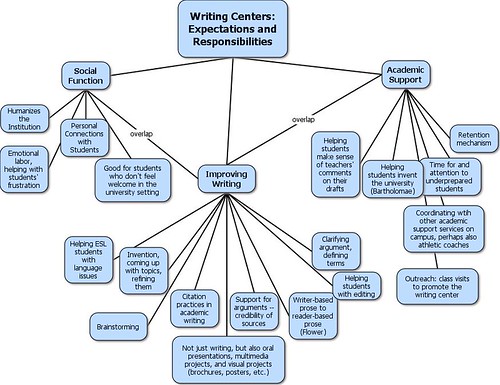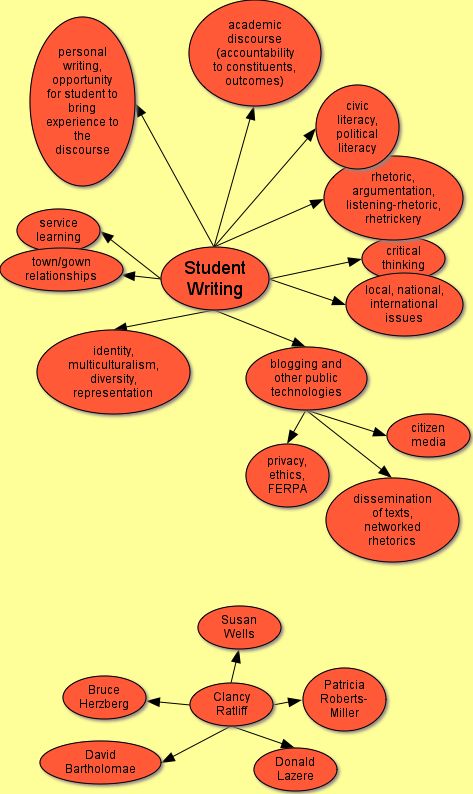Material from the first three case studies is particularly relevant for rhetoric and composition scholars who do work with digital media, and I focus on those three cases in my review. The first case is a proposed project by George Mason University's Center for History and New Media called the History Teacher Network. The network, modeled on social software, was to be designed as a place where K-12 teachers can upload and share the learning materials they create, such as PowerPoint presentations or online modules. From the perspective of copyright law, the problem was that some of the learning materials may feature copyrighted third-party content: photographs, music, or video clips. That George Mason University would risk secondary liability for hosting these materials and enabling their distribution constituted an insurmountable obstacle, and the Center for History and New Media “has been forced to curtail its plans for a resource exchange component of the network because of the risk of secondary liability for copyright infringement” (Fisher and McGeveran 20). In rhetoric and composition studies, scholars have proposed similar networks for sharing teaching materials. In April of 2006, I attended a meeting in Los Angeles for Next/Text, a project of the Institute for the Future of the Book. The meeting was devoted to discussion of what rhetoric and writing textbooks could become if their authors used digital technologies creatively and innovatively. We imagined just such a network, composed of materials from teachers; textbooks could be curated by users' creating various collections and arrangements of these materials. They could be tagged with categories of the users' choosing, and they could be linked through a system similar to Amazon.com's recommendations based on users' tastes. We hadn't gotten so far as to propose potential hosting sites for the network (though futureofthebook.org, the Institute's domain, would have been an intuitive first choice), but a network of teaching materials in rhetoric and composition studies would almost certainly face the same secondary liability issues that thwarted the History Teacher Network.
In their second case study, Fisher and McGeveran explain the pedagogical and legal dilemma faced by film studies teachers. In order to illustrate and teach techniques such as jump cutting, mise en scene, wipes, and split screen, they must be able to show scenes from films. A teacher may, for example, want to create a montage of scenes from eight to ten films to show the evolution of special effects over time. If she wants to do that, or if she wants to make a scene or two available to students for a homework assignment, she must circumvent copy protection technology on the DVDs she uses. Otherwise, she and the students must waste class time sitting through “forced watching,” as Fisher and McGeveran put it – previews, advertisements, and copyright warnings. Such circumvention constitutes a violation of DRM, or Digital Rights Management, even though the teacher's use of the content falls under fair use.
The result is what Fisher and McGeveran call an “uneasy equilibrium” in the violation of the Digital Millennium Copyright Act. Rhetoric and composition teachers may face the same dilemma as more rhetoricians – Joyce Irene Middleton's work is one example – study film as rhetorical text, or when composition teachers wish to use film clips to illustrate issues of representation, including race and sexuality. In order to settle the dilemma for film teachers, Fisher and McGeveran argue that “[t]here should be no penalty under the DMCA when DRM systems are circumvented purely to enable uses of content that are educational, legally permitted, and noncommercial – perhaps with a proviso that reasonable efforts are made to avoid subsequent leakage of the content” (97). While their suggestion would relieve film teachers' concerns about copyright law, it still does not address another major problem with copyright law: its labyrinthine complexity. Scholars such as law professor Jessica Litman have argued that copyright law should be easier for the general public to understand, which would cohere with copyright law's ostensible concern for the public interest and help the public to respect it and take it seriously.
The third case study Fisher and McGeveran present is an effort by New York University and New World Records, a nonprofit record company, to create DRAM, or the Database for Recorded American Music. The database is devoted to obscure music and “underrecognized composers” (31), so the administrators of DRAM prioritized good financial compensation for the artists. Despite New World Records' and NYU's commitment to fair compensation, as well as the nonprofit educational nature of the use of the music, the rights clearance process proved to consume a prohibitive amount of money and time. Fisher and McGeveran report, “All told, rights clearance for DRAM consumed several years and enormous amounts of staff effort and expense. The small scale and nonprofit status of the initiative often made rightsholders or their intermediaries less interested in responding to those efforts” (34). The content industries had little to gain from DRAM, it seems. At least one project in rhetoric similar to DRAM exists: AmericanRhetoric.com, a repository of audio, video, and text transcripts of famous speeches. While much of the content on AmericanRhetoric.com consists of presidential and senatorial speeches, which are considered government documents and therefore are public domain, the site does feature some copyrighted content. The site has a fair use statement, an excerpt of which reads:
AmericanRhetoric.com contains copyrighted materials (html/pdf/flash text, audio, video, digital images), the use of which in many cases has not been specifically authorized by the copyright owner(s). These materials include all of the artifacts in the "Movie Speeches" site area as well as various artifacts in the "Top 100 Speeches" and "Speech Bank" site areas. [...] The site is making such material available in the effort to advance understanding of political, social, and religious issues as they relate to the study and practice of rhetoric and public address deemed relevant to the public interest and the promotion of civic discourse.
AmericanRhetoric.com believes that the nature and use of the artifacts on this site not in the public domain or not the property of the owner of this site constitutes “fair use” of any such material as provided for in section 107 of the U.S. Copyright Act. The material on this site is intended primarily for research and educational purposes, has been previously published, and is distributed without profit.
I do not know whether Michael E. Eidenmuller, the owner of AmericanRhetoric.com, has received cease-and-desist letters for his inclusion of copyrighted content, but I am speculating that the resource he has created has gone unchallenged due mainly to the fact that he maintains it individually and does not seem to have the endorsement of his institution, the University of Texas at Tyler. He features ads on the site, presumably to help cover hosting costs and domain name registration.




